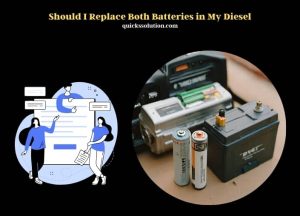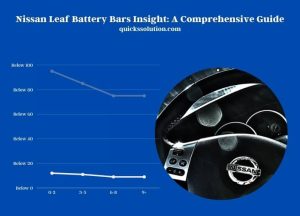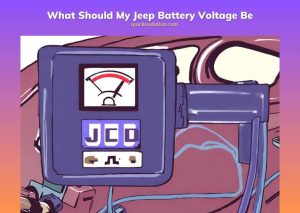Published on: September 28, 2023
Written by Amlan Roy / Fact-checked by Hashim Manna
Do you have to lock hubs for 4×4? Yes, for most 4×4 systems, locking the hubs is essential to engage the four-wheel drive.
Locking hubs are a crucial component of many 4×4 systems. They connect the front wheels to the axle, allowing power to be transferred from the engine to the wheels. There are two primary types of locking hubs: manual and automatic. Manual locking hubs require the driver to physically turn a dial or switch on the hub to lock or unlock it. This type of hub offers more control to the driver and is often preferred for its reliability. On the other hand, automatic locking hubs engage on their own when the 4×4 system is activated.
Using manual locking hubs requires a bit more effort. Before engaging the 4×4, the driver must exit the vehicle and turn the hub to the locked position. Once the 4×4 is no longer needed, the hubs should be returned to the unlocked position to prevent unnecessary wear. Some might wonder if it’s possible to leave the hubs locked while in 2WD. Technically, it’s possible, but it’s not recommended as it can lead to increased fuel consumption and wear on the components.

Understanding how locking hubs work is essential for anyone using a 4×4 system. Without them, the 4×4 system wouldn’t function correctly. If a vehicle lacks locking hubs, it’s likely using a different system to engage the four-wheel drive. Always refer to the vehicle’s manual for specific instructions and recommendations.
The Role of Hubs in 4×4 Systems
What are hubs and their primary function?
Ever wondered why your 4×4 vehicle has those little dials on the wheels? Those are the hubs! Think of them as the gatekeepers of your vehicle’s power distribution. They decide whether your front wheels get a share of the engine’s power or not. In simple terms, they’re the connectors that link your wheels to the drive mechanism.
The connection between hubs and the 4×4 mechanism
Imagine a relay race. The baton pass between runners is crucial, right? Similarly, in a 4×4 system, hubs play a pivotal role in ensuring that power is smoothly transferred from the engine to the wheels. Without them, you might as well be driving a regular car on a muddy trail. Not fun, right?
Manual Locking Hubs: A Closer Look
Operation and mechanics of manual hubs
Remember those old-school telephones where you had to rotate the dial for each number? Manual locking hubs work on a similar principle. You have to get out of your vehicle and turn a dial on each hub to lock or unlock it. It’s a bit of work, but hey, some folks love that hands-on approach!
Pros and cons of using manual locking hubs
Manual hubs are like that trusty old pen that never runs out of ink. Reliable, straightforward, and without any fancy tech that could go haywire. But, just like everything, they have their downsides. You need to remember to lock and unlock them, and sometimes, in extreme conditions, they can be a bit stubborn.
Automatic Locking Hubs: An Overview
How automatic hubs differ from manual ones
Automatic hubs are like magic! Well, not really, but they do make life easier. Instead of manually turning dials, these hubs sense when you engage the 4×4 and lock themselves. It’s like having a smart assistant in your car that knows exactly what to do and when.
Advantages and disadvantages of automatic systems
While automatic hubs sound like a dream, they’re not without their quirks. Sure, they’re convenient and quick, but they also have more components that can fail. It’s a bit like comparing a manual and automatic transmission. Each has its fans and its critics.
The Process: Locking and Unlocking Hubs
Step-by-step guide to using manual hubs
Got manual hubs? No worries! Here’s a quick guide: Park your vehicle safely. Step out, and turn the dial on each hub to the ‘lock’ position. Hop back in, engage 4×4, and you’re good to go! Done with the rough terrain? Just reverse the process. Easy, right?
Automatic hub engagement and disengagement
For those with automatic hubs, life’s a bit simpler. Drive your vehicle, engage the 4×4, and the hubs will do their thing. Once you’re back on regular roads, disengage the 4×4, and the hubs will follow suit. It’s like having a dance partner who’s always in sync with your moves!
Driving in 2WD with Locked Hubs
Potential effects on vehicle performance
Ever tried running with shoes that are a size too big? That’s what driving in 2WD with locked hubs feels like. Your vehicle might feel sluggish, and you’ll probably notice a dip in fuel efficiency. It’s not harmful per se, but it’s not the most efficient way to drive.
Reasons to avoid or consider this practice
While it’s tempting to leave the hubs locked (especially if you’re going off-road again soon), it’s not always the best idea. It can lead to increased wear and tear. But, if you’re in a situation where you’ll be frequently switching between terrains, it might make sense for short durations.
Alternatives to Traditional Locking Hubs
Vehicles without locking hubs: How do they work?
Not all 4x4s come with visible locking hubs. Some modern vehicles use internal mechanisms that do the job without any manual intervention. It’s like having an invisible helper inside your wheels, ensuring everything runs smoothly.
Comparing traditional hubs with modern alternatives
It’s like comparing vinyl records with streaming music. Both have their charm, their advantages, and their loyalists. Traditional hubs give you more control, while modern systems offer convenience. It all boils down to what you value more: hands-on control or ease of use?
Maintenance and Care for Locking Hubs

Routine checks and upkeep for longevity
Just like you’d service your car’s engine, your hubs need some TLC too. Regularly check them for dirt, debris, and any signs of wear. A bit of maintenance can go a long way in ensuring they serve you well for years.
Common issues and how to address them
Stuck hub? It happens! Sometimes, dirt or rust can make them a bit uncooperative. A good cleaning or a bit of lubrication can often solve the issue. If not, it might be time to see a mechanic. After all, better safe than sorry, right?
Real-world Scenarios: When to Use 4×4 and Lock Hubs
Different terrains and driving conditions
From muddy trails to snowy roads, 4×4 can be a lifesaver. But remember, not all terrains require the same approach. While a muddy path might need locked hubs and low speed, a snowy road might just need the 4×4 without locking the hubs.
Making the most of your vehicle’s 4×4 capabilities
Your 4×4 is like a Swiss Army knife on wheels. It’s versatile and can handle a variety of situations. But, like any tool, it’s most effective when used correctly. So, learn about your vehicle, understand its capabilities, and you’ll be ready for any adventure!
FAQs
What Are Locking Hubs in a 4×4 System?
Locking hubs, often found on 4×4 vehicles, are mechanisms that connect or disconnect the front wheels from the drive shaft. When engaged or “locked”, they allow power from the engine to be transmitted to the front wheels. This is particularly useful in off-road conditions where all-wheel drive can offer better traction and control.
Why Do Some 4×4 Vehicles Have Manual Locking Hubs?
Manual locking hubs offer a direct and mechanical connection, which many off-roading enthusiasts prefer. They give the driver more control over when to engage or disengage the 4×4 system. While they require the driver to physically lock or unlock them, this direct approach is often seen as more reliable, especially in extreme conditions.
How Do Automatic Locking Hubs Differ?
Automatic locking hubs are designed for convenience. They automatically engage when the 4×4 system is activated, eliminating the need for the driver to manually lock them. This can be particularly useful in situations where quick engagement of the 4×4 system is needed, as there’s no delay in waiting for the driver to lock the hubs.
Is It Possible to Drive in 2WD with the Hubs Locked?
Yes, it’s possible to drive in 2WD with the hubs locked. While it won’t harm the vehicle, it can lead to reduced fuel efficiency and increased wear on certain components. It’s generally recommended to unlock the hubs when not using the 4×4 system to optimize performance and longevity.
What Happens If I Forget to Unlock My Manual Hubs?
If you forget to unlock manual hubs after disengaging the 4×4 system, your vehicle will still operate, but you might experience decreased fuel efficiency. Over time, this can also lead to increased wear and tear on the hubs and related components. It’s a good practice to always check the position of your manual hubs after using the 4×4 system.
Do All 4×4 Vehicles Require Locking Hubs?
No, not all 4×4 vehicles have or require locking hubs. Some modern 4×4 systems use internal mechanisms that automatically engage or disengage the front wheels from the drive shaft without the need for external locking hubs. The type of system largely depends on the vehicle’s design and intended use.
How Do I Maintain My Locking Hubs?
Regular maintenance of locking hubs involves cleaning them of dirt and debris and ensuring they’re well-lubricated. Periodically checking for signs of wear or damage can help in early detection of potential issues. If you notice any difficulty in locking or unlocking them, or hear unusual noises, it’s a good idea to consult a mechanic.
Locking hubs play a pivotal role in the 4×4 experience. Whether manual or automatic, they ensure that power is effectively transferred to the wheels, allowing for optimal off-road performance. Regular maintenance and understanding when to use them can enhance your driving experience and prolong the life of your vehicle’s components. So, next time you’re off on an adventure, you’ll know exactly how to make the most of your 4×4!




